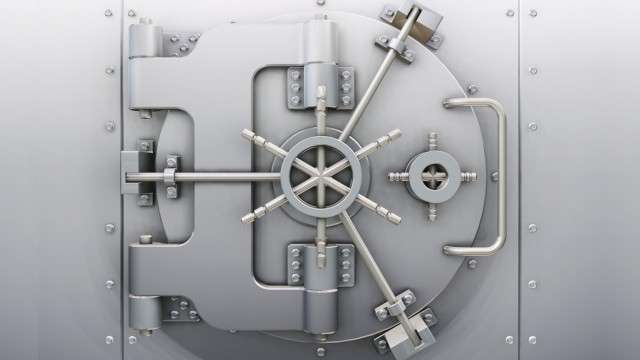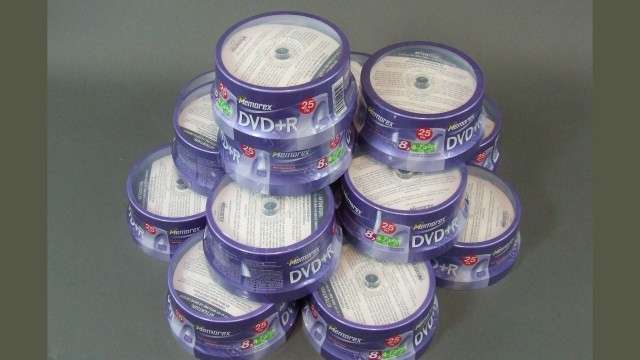How to store your data forever

Whether you’re a photographer, engineer, businessman, or just a casual computer user, chances are that you have images, blueprints, or important legal documents that you want archived for a good part of your life. Unfortunately, the storage industry in general is concerned more about data density and cost per MB than putting any amount of effort in maintaining data integrity over longer periods of time.
What not to use
Before we get to the ideal long-term storage medium, let’s take a look at which archival solutions to avoid and why. Flash drives, for starters, use tiny capacitors to store a miniscule amount of electrical charge. This charge tends to get dissipated over time, which rules out this ubiquitous USB storage device. Did I mention that flash drives have a ridiculously high cost per MB? Hard drives aren’t guaranteed to work beyond three years for very good reasons. This magnetic storage medium has way too many moving parts, with incredibly low tolerance for error to work reliably on a long-term basis. The process of having to spin them up to test them every few months and replacing the drives after every three years is quite cumbersome and prohibitively expensive.
There are numerous online file hosting services as well, but none can really promise they’ll be around forever. In fact, distributed online storage services (Cloud storage) have fallen prey to data loss in the past. Moreover, large Hollywood studios will continue to take down online storage websites in their quest to wrest Internet freedom away from us through laws such as PIPA, SOPA, ACTA et al. In a nutshell, so far we have realised that hard drives are useless, flash drives are expensive and useless, and online storage has been rendered useless due to corporate greed. Things aren’t looking too great for long-term storage then.
A highly collimated ray of hope
Don’t lose heart, because the best way to store data for a really long time is ironically the cheapest and the most widely available. Optical media such as CD, DVD, and Blu-ray discs happen to offer the most ideal long-term storage solution. Not only does this medium provide better resistance against loss of data integrity, it also strikes an ideal balance between cost and ease of storage/retrieval. However, which one of these should you use?

For starters, CDs are best avoided for two main reasons. Firstly, if you want to archive a substantial amount of data, they end up being more expensive than either DVD or Blu-ray blanks. Secondly, the construction quality is considerably inferior to its successors, which makes them more susceptible to damage caused by mishandling and environmental factors. DVD and Blu-ray blanks, however, have the all-important recording and reflective layer sandwiched between two polycarbonate substrates. Unlike with CDs, an extra helping of plastic layer found in a DVD/Blu-ray makes it nearly impossible to scratch or oxidise the fragile, yet crucial reflective layer. That’s one less way to ruin a disc.
Blu-ray or DVD?
The choice between DVD and Blu-ray entirely depends upon the volume of data that needs to be backed up. Apart from the obvious advantage of considerably higher data density, Blu-ray drives are significantly more scratch-resistant than DVDs, thanks to a special hard coating. However, Blu-ray blanks aren’t exactly cheap, since they sell for anywhere between Rs 250 and 300 a pop. You’re better off using DVDs for long term storage, if you simply want to stash and forget a few GB worth of data away for a long time.
Now that we know which medium to opt for, it’s time to delve into the specifics. The unfortunate fact is that user-recordable DVD media will never possess the same longevity of retail-stamped DVDs, which use a significantly more durable metallic recording layer. This is solely due to the fact that DVD-Rs use organic dyes as the recording layer. Like all things organic, this cyanine-based dye tends to deteriorate due to environmental factors. However, higher quality DVD blanks from brands such as Verbatim and Taiyo Yuden employ proprietary Azo-based dyes that are more resistant to chemical degradation. In fact, the former brand can be found relatively easily on the street.
Blu-rays, however, trump DVDs in this department by incorporating a much more stable metallic recording layer. Having said that, one must also know that most modern Blu-ray blank media tend to use cheaper organic dyes to save manufacturing costs. So do your homework well before selecting blank optical media.
Optimising optical media for long-term storage
The most important factor deciding data integrity is the speed at which you burn optical discs. To burn an optical disc at higher speeds, the recording layers needs to have a thinner sputtering of organic dye. This translates into a recording surface that’s fragile and more susceptible to degradation. It is therefore important to opt for blanks rated to burn at lower speeds, and write them at the lowest speed possible.
Moreover, disc rot, which is caused by the oxidation of the metallic reflective layer, tends to begin along the outer rim of the disc. It is therefore a bad idea to fill DVD or Blu-ray blanks up to the brim. Temperature and humidity also greatly affect disc integrity. It’s good practice to keep discs in a dark, cool environment that’s free from excess humidity levels. It pays to keep a few silica gel bags nearby to absorb moisture.
Sensitivity to UV light is another important factor to consider. Keeping recorded discs exposed to sunlight in transparent containers is a very bad idea. Make sure you stash them away in high quality CD sleeves or preferably in individual jewel cases. The discs should be kept upright to negate any chances of physical deformation under gravity. If you absolutely must use spindles for storage, stick to the smaller 10-disc ones. However, using airtight containers to hold these sleeves/jewel cases will do wonders for the longevity of your precious data.
DVD/Blu-ray manufacturers tend to claim anywhere between 30-100 years of life for their products, but that’s best taken with a pinch of salt. That may be true in hermetically sealed labs, but it’s best to err on the side of caution and replicate the data onto newer blank discs after every five years. This shouldn’t be much of a problem since blank media is relatively cheap. It also makes sense to have three copies of your data (preferably using blanks from different brands), with at least one copy being stored somewhere safe and offsite, such as a fireproof bank locker.



Leave a Reply